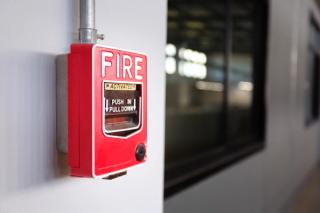
Understanding sound flanking: Fire alarm speaker cable conduits in multi-family buildings
by Neil Vyas
View post

The UK’s primary process safety legislation is the Control of Major Accident Hazards (COMAH) Regulations which apply if a facility stores or handles certain dangerous substances above specified quantities. Dependent on the quantities present, the Regulations apply at either a lower tier or upper tier level.
Every company that operates an upper tier COMAH installation will be aware that, under Regulation 10 of COMAH, they are required to review their safety reports at least every five years. The key word being ‘review’ – a full re-submission of the safety report is neither obligatory nor, in many cases, necessary. However, what many companies fail to appreciate is that Regulation 10 is much broader than the five-year review and places a requirement on operators to undertake a formal review of their safety report:
Consequently, most companies wait until the five-year deadline approaches before dusting off their safety report and starting the review process.
Taken individually each change might seem routine or of little consequence but the fact is that whenever changes are made to plant, equipment, systems or personnel, there is always the potential for increased risk.
The five-year review
One of the main purposes of the five-year review is to provide an opportunity for duty holders to see whether the standards, both technical and procedural, remain appropriate in light of new knowledge and technological developments.
It also ensures that the site safety report remains up to date and continues to provide an accurate representation of the major accident hazards on the site and the measures in place to control them.
It is important to note that, even if there have not been any significant changes on the site, it is still a requirement to complete the five-year review, although it is likely that following consultation with the Competent Authority the safety report may not need to be resubmitted or maybe only in part.
Interim reviews following significant changes
The safety report must be reviewed, and if necessary revised, before any significant modifications are made on site. This refers to any modifications to the quantity, nature or processes of dangerous substances which could have significant repercussions on the major accident hazards. The guidance refers to the below as actions that may lead to significant consequences:
Companies should therefore ensure they have well-developed change management procedures, which are robustly adhered to.
Sending revisions to the Competent Authority
It is important for duty holders to understand the timeframes associated with reviewing and revising the COMAH safety report. It can take many weeks to go through the review process, to ensure all aspects have been covered, and you then have to take into account that the Competent Authority need to assess the report, which can add further delays.
In order to ensure the safety report is up to date, it would be recommended to conduct annual or bi-yearly reviews, rather than waiting five years, in effect treating the safety report as a living document that reflects current conditions. The review process must not be seen as a box ticking exercise but as an opportunity to retain valuable knowledge and experience that can help drive the business forward.
Visit our Safety Advisory page to learn more about our services and how we can support you.
References:
A guide to the Control of Major Accident Hazards Regulations (COMAH) 2015 – https://www.hse.gov.uk/pubns/books/l111.htm

by Neil Vyas

